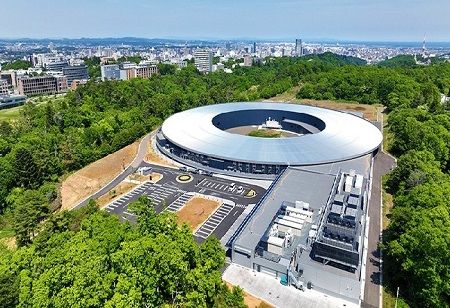A ceremony was held to mark the commencement of operations at Japan’s most powerful next-generation synchrotron radiation facility, the NanoTerasu Synchrotron Light Source, located at Tohoku University’s Aobayama Campus. In his congratulatory message, Japan’s Minister of Education, Culture, Sports, Science and Technology, Masahito Moriyama, expressed his hope that NanoTerasu will be utilized by a wide range of researchers from academia to industry, contributing to significant innovations both in Japan and globally.
NanoTerasu, as the facility is commonly known, features a 110-meter-long linear accelerator and a circular accelerator with a circumference of approximately 350 meters. It functions like a “giant microscope,” capable of analyzing material structures at the nanoscale by exposing them to intensely bright light. This project is a collaborative effort between the National Institute of Quantum Science and Technology (QST) and the Photon Science Innovation Center (PhoSIC), supported by a public-private regional partnership that includes Miyagi Prefecture, Sendai City, the Tohoku Economic Federation, and Tohoku University.
QST President Shigeo Koyasu, in his speech, highlighted that NanoTerasu will help maintain Japan's leading position in synchrotron radiation research by fostering a vibrant ecosystem for cutting-edge science and innovation on a global scale. He acknowledged the challenges faced during the construction of NanoTerasu, such as resource shortages during the COVID-19 pandemic, and noted the facility’s ability to produce high-brightness and high-stability light from the outset. Additionally, the facility includes an experimental hall that is a radiation-free zone, enhancing accessibility and usability.
Koyasu announced that starting next March, a shared-use system for researchers from Japan and abroad will be launched, in addition to the already-operational coalition system, designating NanoTerasu as a national synchrotron radiation facility. He emphasized that by illuminating the incredibly small and dark realm of nanotechnology, NanoTerasu will bring significant benefits to both academia and industry, serving as a beacon of hope in an era marked by volatility, uncertainty, complexity, and ambiguity.

